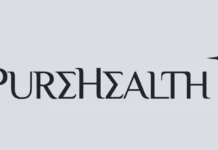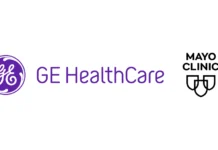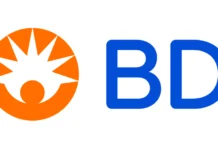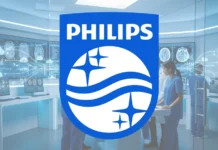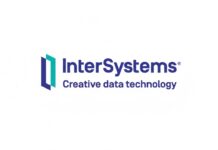Medical knowledge, healthcare IT, and patient care systems are all undergoing constant development in the dynamic healthcare industry. The success of healthcare personnel relies heavily on their continuous professional growth, as they are constantly faced with new knowledge and advances. However, conventional approaches to healthcare training frequently fail to captivate practitioners, resulting in unequal assimilation of training materials. The revolutionary concept of gamification has just emerged in healthcare training; it uses game principles to boost learning, encourage engagement, and, eventually, improve patient care. Organisations are seeing remarkable skill advancement and patient outcome improvements when they combine the power of gamified tactics with the important demands of healthcare training.
Understanding Gamification in Healthcare Training
Gamification is defined as incorporating game design features like points, leaderboards, challenges, interactive scenarios, and rewards into non-game environments. In health education, these features are merged with educational content, making it an interactive and interesting learning process for professionals across various specialties. The process converts what could otherwise be the routine, and sometimes dull, procedure into a challenging, interactive process that allows for improved understanding and skill mastery.
As opposed to the traditional process of learning, gamification calls for active participation by putting learners in realistic scenarios that they will most likely encounter in their profession. For instance, gamified simulation can teach nurses how to manage emergency room scenarios or help surgeons learn more skill in complex procedures. Learning by doing is particularly useful in the health care sector, where minor errors can have a patient’s life-altering effect.
Research and Markets expects the gamification market worldwide to reach $30.7 billion by 2025, with the healthcare sector accounting for a significant percentage. The expansion is a testament to the effectiveness and acceptance of gamification as a means of professional learning, particularly in risky professions like medicine.
Enhancing Professional Development Through Gamification
Healthcare professionals have twin challenges of developing technical skills and soft skills such as communication, team work, and decision-making. Gamification for healthcare education is aimed at both by offering students a deep learning environment that extends beyond theoretical knowledge.
For instance, gamified learning platforms like Osmosis or Kahoot! Medical allow medical professionals to quiz themselves and be rewarded for achieving high scores. The platforms also have built-in tracking of progress, and this involves learners in attaining measurable milestones. The competitive but collaborative environment of such platforms invokes a feeling of accomplishment and motivates learners to keep going and going.
Besides, gamification provides for scenario learning—a process that facilitates professionals to learn decision-making via simulated healthcare environments. An illustration is a simulated intensive care unit (ICU) in which healthcare practitioners must prioritize the treatment of multiple critical patients. Such gamified simulations not only train professionals in technical procedures, but also stress management, multitasking, and addressing unforeseen issues—skills that are critical in real healthcare environments.
Above all, gamification promotes peer learning, in which players can compete against or interact with their peers. For instance, gamified training modules that feature leaderboards promote friendly competition, compelling healthcare professionals to perform better than their peers while sharing the same objective of enhancing patient care.
Impact on Patient Outcomes
The ultimate aim of gamification in healthcare training is not just professional growth but the application of that education into improved patient outcomes. It’s simple and straightforward: more capable healthcare professionals equate to improved care.
Among the most impressive uses of gamification is in surgical procedure training. Healthcare workers can practise surgical methods in a low-risk virtual environment by using platforms such as Touch Surgery, which provide incredibly realistic, step-by-step surgical simulations. According to a research in the Journal of the American College of Surgeons, medical residents’ surgical performance increased by 38% as a result of gamified simulation training. During actual surgeries, this improvement directly translates into fewer errors and improved patient safety.
Additionally, gamification is essential in fields like preventive care and the management of chronic diseases. For instance, diabetes educators can instruct patients on how to properly check their blood sugar levels using gamified platforms. Patients are better able to manage their diseases when medical personnel improve their patient education skills through gamified training, which raises compliance rates and improves health outcomes.
Gamification improves patient communication, which is essential to the provision of care. Healthcare professionals can improve their interpersonal skills by using training modules that mimic challenging patient discussions, like breaking bad news or dealing with non-compliance. In addition to fostering trust between the patient and the practitioner, this makes guarantee that patients are understood and supported throughout their course of therapy.
Real-Life Case Studies and Success Stories
The ability of gamification to be used in healthcare training has been widely backed by numerous case studies. One of these includes the Cleveland Clinic, where a gamified system was implemented with the aim of training its nurses in medication administration. The system utilized virtual simulations in which the learners needed to detect errors, compute the correct doses, and dispense medication safely. The results were phenomenal: error rates dropped by 37%, and participant engagement rates were significantly higher than in traditional training sessions.
In a different instance, Johnson & Johnson developed a gamified training module for orthopedic surgeons to perform knee replacement surgery. The technology employed augmented reality (AR) and gamification elements including real-time scoring and feedback. Surgeons who applied the module performed better in the operating room with improved accuracy and efficiency.
These are only a few examples of the numerous ways gamified training solutions not only address the issues of career development but pay dividends in actual patient care.
Addressing Challenges and Ethical Considerations
Though the advantages of gamification in clinical education are unquestionable, its implementation is not free of issues. Among its greatest issues is making sure that gamified material aligns with clinical protocols and ethical standards. In contrast to the traditional learning setting, in which an instructor bears the responsibility of following protocols, gamified settings bear the pressure of using precise algorithms and content validation to uphold clinical integrity.
A second is balancing entertainment with learning. While entertainment aspects of a game may be used to increase participation, they should never be at the cost of learning. Excessive focus on competition, for instance, may lead to fatigue or decreased cooperation between health professionals.
Lastly, healthcare organisations with limited budgets may not be able to afford to implement gamified training solutions, which raises the issue of accessibility. Providers of technology, healthcare organisations, and lawmakers must work together to close this access gap and guarantee that all people have equal opportunity to use these revolutionary technologies.
The Future of Gamification in Healthcare Training
The integration of gamification into healthcare instruction is a continuous process, with technology and innovation driving its ongoing evolution. Gamified platforms are anticipated to be further improved by emerging technologies such as artificial intelligence (AI), augmented reality (AR), and virtual reality (VR), which will provide even more personalised and immersive learning experiences.
To better prepare for high-pressure circumstances, paramedics could benefit from gamified training that is based on virtual reality. This would allow them to practise emergency response scenarios in environments that are hyper-realistic. The same holds true for healthcare professionals; AI-powered platforms might instantly modify training materials to address specific deficiencies.
As these advancements continue to unfold, the scope of gamification in healthcare training will expand, making it an indispensable tool for professional development and patient care enhancement.
Conclusion
In a world where healthcare systems are under constant demand, incorporating innovative training methods such as gamification into healthcare training provides a road ahead. Gamification improves healthcare professionals’ skills and knowledge by combining engaging game elements with critical learning objectives, which leads to better patient outcomes.
With its capacity to engage, educate, and empower, gamification is transforming the space of professional development within healthcare. As its applications become increasingly more advanced and widespread, it has the potential to yield an educated, able healthcare workforce capable of addressing the challenges of contemporary medicine with assurance and skill. To healthcare organizations and educators, themselves, gamified training solutions are not so much a choice as a requirement in the quest for excellence in the delivery of care. The gamified age of healthcare training has finally come.






